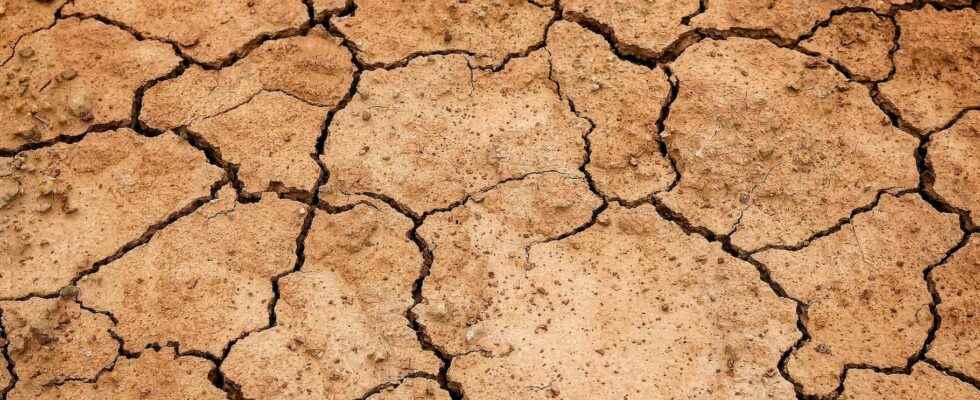You will also be interested
[EN VIDÉO] Garden: 5 flowers that tolerate drought well All plants need water to live. But some tolerate long periods of drought well. With these 5 flowers, the chore of watering is over!
Almost all of France is currently affected by drought orders, with about fifteen departments in a state of “crisis”: in the center-west, center, south-west and south-east, the red level triggered in certain localities prohibits withdrawals, including agricultural ones. Indeed, despite the rains of last week, three quarters of France remain in a state of drought severe according to Windyand even extreme in areas with restricted water.
Few thunderstorms of recent weeks have not been enough to improve the situation: less than one mm of rain fell in Bordeaux in July (compared to a normal of 41 mm), 8 mm in Paris (compared to a normal of 59 mm), and 0 mm in Marignane in the Bouches-du-Rhône (against a normal of 10 mm). And the drought will continue to worsen according to forecasts weather report for the next 10 days: hot and dry weather (apart from a few thunderstorms) is expected to persist throughout the country. By early August, severe drought will affect the whole country according to modeling from Windy. Moreover, the extreme drought will gain ground in the center of the country, the south-west, the north-east, and the interior of Brittany.
Taking a step back, we notice that all of Europe is affected by a severe drought. A good half of the European territory is moreover considered to be in a state of extreme drought: England, Germany, Austria, Poland, Italy, Spain, Ukraine, Croatia, Serbia, Hungary, and Romania.
Increasingly frequent anticyclonic blockages
The anticyclonic blocking situations are multiplying in Western Europe and in France for several years, and in particular in the last eight months, resulting in strong heat and a worrying drought. We speak of an anticyclonic blockage when a anticyclone shifts to France and remains there for several days, even several weeks: this blocking of high pressures results in calm, dry weather. Whenair coming from North Africa rises and is also blocked, the accentuation of the drought is even more important. The atmospheric circulation on Earth has several cells positioned at latitudes different. Hadley’s cell lies between the equator and 30 degrees north and south, where we find winds blowing from the northeast in the northern hemisphere and from the southeast in the southern one. The report of IPCC released almost a year ago, in August 2021, also mentions the fact that since 1980, it would indeed seem, but without certainty, that with global warming the circulation of the Hadley cell has widened, in particular towards the northern hemisphere. The abnormal rise of this cell is precisely at the origin of these blockages of calm weather and hot air over Western Europe.
As specified by meteorologist Guillaume Sechetsince the end of 2021, “ there are vast anomalies anticyclones at latitudes 40 to 50° north in the northern hemisphere (as in the northern Pacific), while the anticyclonic belt is usually present around latitudes 30 to 35° north. This observation does not stop there because the same observation, even more linear, is observed in thesouthern hemisphere ! In general, the anticyclonic belt is usually located around latitude 30° south. Over the past eight months, it has mainly been located between latitudes 40 and 50° south, so that the depressions are thrown towards theAntarctic where low pressure anomalies are observed”.
The migration of the subtropical anticyclonic belts (Northern and Southern hemisphere) for several years is the main cause of these very dry and hot blockages – yet publications on this subject are still too rare! No media is talking about it… https://t.co/S3V3p7Eyo9pic.twitter.com/OBajIpQJhR
— Guillaume Séchet (@Meteovilles) July 18, 2022
According Meteo France“ them climate models all agree on the fact that the Hadley cell will have a greater meridian extension in the future, in connection with anticyclones which shift towards the poles”. This change in global atmospheric circulation therefore tends to increase the risk of droughts in Western Europe, including France. On the other hand, researchers from Météo France point out that Europe is an exception in materials anticyclonic blockages in summer, because summer blockages tend to decrease in other regions of the world.
Interested in what you just read?
